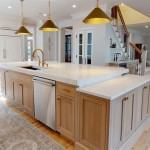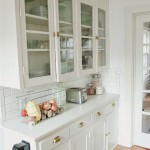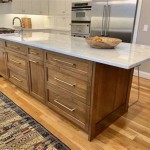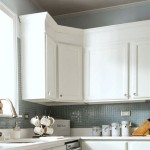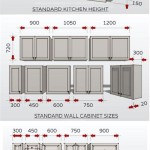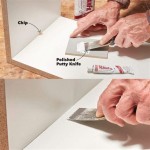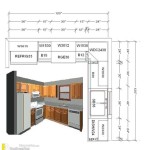Cabinet Component Names: A Comprehensive Guide
Understanding the specific names of cabinet components is essential for various individuals, including homeowners planning renovations, contractors designing kitchens, manufacturers producing cabinets, and even retail employees assisting customers. Accurate terminology ensures clear communication, precise ordering, and ultimately, successful project execution. This article provides a detailed overview of the common names used to identify the distinct parts that comprise a cabinet, covering both face-frame and frameless construction styles.
Cabinets, traditionally a staple in kitchens, bathrooms, and other areas requiring storage, are more than just simple boxes. They are complex assemblies of individual pieces, each serving a specific purpose. Knowing the correct terminology allows for efficient communication when discussing repairs, modifications, or replacements. For instance, instead of saying "the thing at the bottom of the cabinet," one can specify "the baseboard." This precision can save time, reduce misunderstandings, and prevent costly errors.
The classification of cabinet components often depends on the cabinet's construction style. Face-frame cabinets, characterized by a frame attached to the front of the cabinet box, have a different set of component names compared to frameless, or European-style, cabinets, where the doors and drawers attach directly to the cabinet box sides. We will delve into both construction styles, outlining the specific names for each component within each category.
Key Point 1: Understanding Face-Frame Cabinet Components
Face-frame cabinets derive their name from the frame that is attached to the front of the cabinet box. This frame provides structural integrity and a surface for attaching doors and drawers. The following details the components of a face-frame cabinet:
Face Frame: The defining feature of this cabinet style. It's a rectangular frame typically made of solid wood, attached to the front edges of the cabinet box. It provides rigidity, a point of attachment for doors and drawers, and contributes to the overall aesthetic of the cabinet.
Stiles: These are the vertical members of the face frame. They run the full height of the cabinet and form the sides of the opening.
Rails: These are the horizontal members of the face frame. They connect the stiles at the top and bottom, and sometimes in the middle to create openings for drawers or other features.
Cabinet Box: This is the primary structure of the cabinet, consisting of the sides, top, bottom, and back. It's typically constructed from plywood or particleboard.
Sides: The vertical panels that form the sides of the cabinet box. They provide structural support and define the width of the cabinet.
Top: The horizontal panel that forms the top of the cabinet box. In base cabinets, this is often the countertop support.
Bottom: The horizontal panel that forms the bottom of the cabinet box. In base cabinets, this supports the contents of the cabinet.
Back: The panel that forms the back of the cabinet. It can be full or partial, and provides additional support and helps to keep the cabinet square.
Toe Kick: The recessed area at the bottom of a base cabinet. It allows for foot space while standing at the countertop.
Toe Kick Plate: The material covering the front of the toe kick area. It's often a decorative element.
Shelves: Horizontal panels inside the cabinet, used for storing items. They can be fixed or adjustable.
Drawer Box: The framework that holds the drawer front. It typically consists of sides, a front, and a back, joined together to form a box.
Drawer Front: The decorative panel attached to the front of the drawer box. It's what is visible when the drawer is closed.
Drawer Slides: Mechanisms that allow the drawer to slide in and out smoothly. They can be side-mounted, under-mounted, or center-mounted.
Door: The hinged panel that covers the cabinet opening. It can be a single panel or a double-door configuration.
Hinges: The hardware that attaches the door to the face frame, allowing it to swing open and closed.
Pulls/Knobs: The hardware attached to the doors and drawers, used for opening and closing them.
Finished End Panel: An additional panel applied to the exposed side of a cabinet run to provide a finished, decorative appearance.
Filler: A narrow strip of wood used to fill gaps between cabinets or between a cabinet and a wall. It provides a clean, professional look and allows for proper door and drawer operation.
Key Point 2: Exploring Frameless Cabinet Components
Frameless cabinets, also known as European-style cabinets, eliminate the face frame. The doors and drawers are attached directly to the cabinet box sides. This construction style offers a more streamlined look and often maximizes interior storage space. Here are the specific component names for frameless cabinets:
Cabinet Box: Similar to face-frame cabinets, the cabinet box forms the primary structure. However, in frameless construction, the box itself is often made of thicker material to provide the necessary support.
Sides: The vertical panels that form the sides of the cabinet box. Because they provide direct support for doors and drawers, they are typically thicker than those used in face-frame cabinets.
Top: The horizontal panel that forms the top of the cabinet box. Its primary function remains the same, providing a surface for attaching the countertop (in base cabinets) or supporting the upper cabinet structure.
Bottom: The horizontal panel that forms the bottom of the cabinet box. It supports the contents of the cabinet and needs to be robust enough to handle the weight.
Back: The panel that forms the back of the cabinet. It is crucial for maintaining the cabinet's squareness and providing additional support.
Toe Kick: The recessed area at the bottom of a base cabinet, providing foot space. In frameless cabinets, the toe kick is often a separate piece that attaches to the bottom of the cabinet box.
Toe Kick Plate: The material covering the front of the toe kick area. It is typically attached to the toe kick.
Shelves: Horizontal panels inside the cabinet, used for storing items. They can be fixed or adjustable, similar to face-frame cabinets.
Drawer Box: The framework that holds the drawer front. The construction is generally the same as in face-frame cabinets.
Drawer Front: The decorative panel attached to the front of the drawer box. It's what is visible when the drawer is closed.
Drawer Slides: Mechanisms that allow the drawer to slide in and out smoothly. Frameless cabinets often utilize concealed, under-mount drawer slides for a cleaner aesthetic.
Door: The hinged panel that covers the cabinet opening. In frameless cabinets, the doors typically overlay the entire cabinet box, creating a seamless look.
Hinges: The hardware that attaches the door to the cabinet box sides. Frameless cabinets use specialized hinges that allow for precise adjustment and alignment of the doors.
Pulls/Knobs: The hardware attached to the doors and drawers, used for opening and closing them.
Gables: These are vertical panels used on the sides of exposed cabinet runs to provide a finished look and add structural support. They are especially important in frameless construction.
Skin Panels: Thin panels used to cover exposed sides of the cabinet box, providing a consistent and aesthetically pleasing finish.
Integrated Light Rail: A strip along the bottom of the upper cabinets designed to conceal under-cabinet lighting.
Key Point 3: Universal Cabinet Components and Hardware
Certain cabinet components and hardware are common to both face-frame and frameless construction, though their specific designs and attachment methods might vary. Understanding these universal elements is crucial for general cabinet knowledge:
Shelf Supports: These are the hardware components that hold the shelves in place. They can be pins, clips, or adjustable shelf standards.
Cabinet Levelers: Adjustable feet located at the bottom of base cabinets, used to ensure the cabinets are level, especially on uneven floors. These are often hidden by the toe kick.
Door Bumpers: Small adhesive pads attached to the inside corners of cabinet doors to cushion the closing and prevent slamming.
Drawer Dividers: Inserts placed inside drawers to organize items and prevent them from shifting.
Roll-Out Trays: Shelves that slide out on glides, providing easy access to items stored deep inside the cabinet.
Lazy Susans: Rotating shelves, typically located in corner cabinets, to maximize storage space and accessibility.
Wire Pull-Outs: Metal baskets or racks that slide out, commonly used for storing spices, cleaning supplies, or other items.
Sink Base: A cabinet specifically designed to accommodate a sink. It often has a false front that can be tilted for access to the plumbing.
Blind Corner Cabinet: A cabinet designed to fit into a corner where one side is inaccessible. It typically has a specialized door configuration or a pull-out mechanism to access the hidden space.
Corner Cabinet:A cabinet that is generally L-shaped and sits in the corner of a kitchen or bathroom.
Understanding these component names enhances communication between homeowners, contractors, and cabinet manufacturers, leading to more accurate designs, efficient construction, and ultimately, more satisfactory results. While specific terminology can vary slightly depending on regional dialects and manufacturer preferences, the information presented here provides a solid foundation for navigating the world of cabinet components.

Kitchen Cabinet Parts Names Google Search Plans Cabinets Making

Cabinet Parts And Profiles

Parts Of A Cabinet Doors

Kitchen Cabinet Terms Cabinets Of The Desert

Cabinets What Is The Name Of This Part Drawers Home Improvement Stack Exchange

Everything You Need To Know About Kitchen Cabinets Rona

10x10 Bay Shaker Light Grey Kitchen By Cabinetselect Com

Voary For Frameless Cabinet Parts

Cabinets Countertops Home Preservation Manual

Need Advice Set Parametric Workplane In Modeling Cabinet Autodesk Community Inventor
Related Posts

